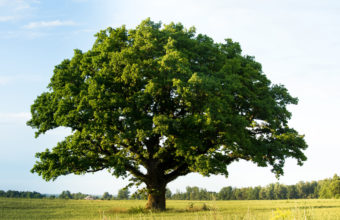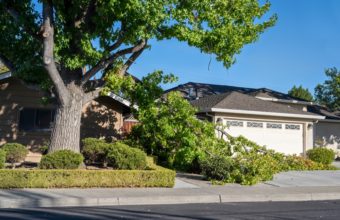Controlling tree height, also known as “height reduction” or “canopy management,” is a specific pruning technique that can be used to limit the vertical growth of a tree. Approach this practice with caution, as it can stress the tree if not done correctly.
Here’s how to control tree height…
- Assess the Tree’s Health and Species – Before attempting height reduction, ensure that the tree is healthy and suitable for this type of pruning. Not all tree species are well-suited for height reduction, and some may respond better than others.
- Determine the Desired Height – Decide how much you want to reduce the tree’s height. Removing too much of the canopy can stress the tree and negatively impact its health.
- Select the Right Season – The best time for height reduction pruning is during the dormant season, in late winter to early spring or late fall. Pruning during these times is less stressful for the tree.
- Identify the Branches to Remove – Locate the branches that need to be pruned to achieve the desired height reduction. Focus on branches that contribute to the tree’s height while preserving the tree’s overall structure and aesthetics.
- Make Proper Cuts – For smaller branches, use pruning shears or loppers. Make clean cuts just outside the branch collar, which is the raised area where the branch attaches to the trunk. For larger branches, use a pruning saw. Make an undercut first about 6-12 inches away from the trunk, then make a top cut slightly further out. This prevents the branch from tearing the bark as it falls.
- Limit the Amount of Height Reduction – Avoid removing more than 25% to 30% of the tree’s canopy in a single pruning session. Over-pruning can stress the tree and may lead to long-term health issues.
- Monitor the Tree – Keep a close eye on the tree’s response to the pruning. Ensure that wounds are healing properly and watch for signs of stress, such as excessive dieback or loss of vigor.
- Regular Maintenance – Controlling tree height may require periodic pruning to maintain the desired size. Prune as needed, but be careful not to over-prune.
- Consult with a Professional – If you’re unsure about controlling the height of a specific tree or have concerns about potential stress or damage, it’s advisable to consult with a certified arborist or tree care professional. They can assess the tree’s health and provide guidance on the most appropriate approach to height reduction.
Controlling tree height should be done with care and should not compromise the tree’s overall health and structure. Pruning should aim to strike a balance between achieving your height reduction goals and maintaining the tree’s vitality and aesthetics.




